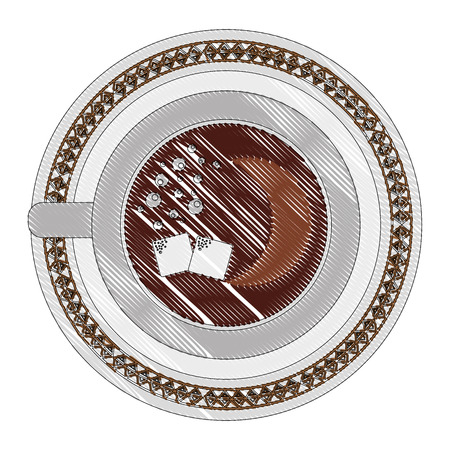1. Introduction: The Coffee Culture on Campus
Walk onto almost any college campus in the United States, and youre likely to find coffee at the heart of student life. Whether its a cozy café tucked inside the library, a bustling Starbucks near the student union, or a small coffee cart parked outside a lecture hall, coffee is everywhere. Its more than just a drink — its part of the academic experience.
For students and faculty alike, coffee serves both a practical and symbolic role. Its the go-to companion during early morning classes, late-night study sessions, and creative brainstorming meetings. It fuels long hours of research and provides comfort during stressful exam weeks. The simple act of grabbing a cup of coffee often marks the beginning of a productive session or an engaging group discussion.
American college culture has embraced coffee as a staple for intellectual and creative engagement. Its common to see students gathering with laptops and notebooks at campus cafés, collaborating on group projects over lattes or preparing presentations while sipping cold brews. Professors too can be found holding informal office hours over cappuccinos or discussing research ideas with colleagues in faculty lounges equipped with espresso machines.
The Ubiquity of Coffee on Campus
| Campus Location | Coffee Presence |
|---|---|
| Library | On-site cafés or vending machines offering hot beverages |
| Student Union | Popular franchises like Starbucks or Dunkin |
| Dormitories | Students often have personal coffee makers or single-serve machines |
| Faculty Lounges | Drip coffee stations or espresso setups for staff use |
Coffee as a Social and Academic Connector
Coffee isnt just about staying awake — its also about connection. Sharing a cup of coffee can break down social barriers between professors and students or help teammates relax during high-pressure group assignments. It creates casual spaces for big ideas to emerge.
The Ritual Behind the Brew
Grabbing coffee before class or during study breaks has become a ritual that many students rely on for structure and focus throughout the day. This routine helps set the tone for productivity, making it easier to transition into “work mode.” For creatives, it’s often the spark that gets ideas flowing during brainstorming sessions.
2. Caffeine and Cognitive Function
When it comes to academic or creative brainstorming sessions, staying sharp and mentally engaged is key. That’s where coffee often steps in as the go-to beverage. The main active ingredient in coffee—caffeine—is a natural stimulant that directly impacts how our brain works, especially when we need to focus, think fast, or come up with fresh ideas.
How Caffeine Works in the Brain
Caffeine primarily affects the brain by blocking a chemical called adenosine. Adenosine is what makes us feel tired over time. When caffeine blocks it, the result is increased alertness and reduced fatigue. This leads to a heightened sense of energy and a quicker mental response—both essential during intense study groups or creative meetings.
Main Cognitive Benefits of Caffeine During Brainstorming
| Benefit | Description | Impact on Brainstorming |
|---|---|---|
| Increased Alertness | Caffeine keeps you awake and attentive by stimulating the central nervous system. | Helps participants stay engaged and responsive during long sessions. |
| Improved Focus | Enhances your ability to concentrate on specific tasks or topics. | Makes it easier to follow complex discussions or stay on track with objectives. |
| Faster Reaction Time | Boosts processing speed and decision-making capabilities. | Enables quicker idea sharing and spontaneous collaboration. |
| Enhanced Mood | Caffeine can increase dopamine levels slightly, promoting a better mood. | A more positive environment encourages open communication and creativity. |
The Sweet Spot: How Much Coffee Is Just Right?
While caffeine can be incredibly helpful, too much of it might lead to jitters or anxiety—especially in high-pressure academic environments. For most adults, around 200-400 mg of caffeine per day (roughly 1–3 cups of coffee) is considered safe and effective for cognitive benefits without significant side effects. It’s all about finding that balance where you’re energized but not overstimulated.
So next time youre heading into a group project meeting or trying to tackle a complex problem with your team, grabbing that cup of coffee might just give your brain the extra edge it needs to spark something brilliant.

3. The Social Ritual of Coffee Breaks
In academic and creative environments, coffee breaks are more than just a chance to refuel with caffeine—they are essential social rituals that can lead to some of the most productive and inspiring moments in a workday. Whether in a university lounge, a co-working space, or a campus café, these informal gatherings around the coffee pot often spark unexpected conversations and collaborations.
The Power of Informal Interactions
Unlike structured meetings or scheduled brainstorming sessions, coffee breaks offer a relaxed setting where people from different departments, disciplines, or project teams can interact freely. This casual atmosphere encourages open dialogue and helps break down hierarchical or departmental barriers. It’s during these unplanned chats that new ideas often surface, perspectives shift, and creative solutions emerge.
How Coffee Breaks Foster Collaboration
Coffee acts as a social lubricant that makes initiating conversation easier. When individuals come together over a shared love for coffee, it sets the stage for spontaneous idea exchanges. These interactions can lead to:
- Cross-disciplinary insights: A literature professor might spark an idea for an app developer by discussing narrative structure.
- Peer feedback: Artists or writers may share works-in-progress and receive immediate reactions.
- Team bonding: Regular coffee breaks build trust and camaraderie among group members, which is vital for successful collaboration.
Examples of Where It Happens
| Setting | Description | Common Outcomes |
|---|---|---|
| University Faculty Lounge | Professors from various departments gather between lectures | New research partnerships, interdisciplinary course ideas |
| Startup Co-Working Space | Designers, developers, and marketers mingle during breaks | Product pivots, UX improvements, marketing strategies |
| Café Near Campus | Students and creatives brainstorm over lattes and espressos | Group projects form, freelance collaborations begin |
Coffee as a Creative Catalyst
The caffeine in coffee certainly helps sharpen focus and energy levels, but its greater value lies in creating moments where minds meet. A well-timed coffee break might be all it takes to unlock the next big idea or connect with someone who offers a fresh take on a problem. In many ways, the coffee cup becomes the centerpiece of creative synergy.
Ultimately, its not just about whats in the cup—its about what happens around it. In both academic circles and creative industries, coffee breaks remain one of the most effective—and enjoyable—ways to cultivate innovation through human connection.
4. Coffee Shops as Modern Think Tanks
Across college towns and urban centers alike, coffee shops have become go-to spots for students, educators, freelancers, and creatives looking to spark ideas outside the traditional classroom or office. These casual yet stimulating environments offer more than just caffeine—they serve as modern think tanks that foster collaboration and innovation.
Whether its a group project meeting or a solo brainstorming session, the atmosphere of a coffee shop helps set the tone for productive thinking. The gentle hum of background chatter, the aroma of freshly brewed coffee, and the laid-back seating arrangements all contribute to a space that encourages both deep focus and spontaneous discussion.
Why Coffee Shops Work for Brainstorming
Coffee shops provide an ideal blend of comfort and stimulation. Unlike sterile library rooms or noisy dorms, they strike a balance between quiet enough to concentrate and lively enough to stay energized. Here’s why so many people choose them for academic and creative work:
| Feature | Benefit |
|---|---|
| Free Wi-Fi | Access to online research tools and cloud documents |
| Ambient Noise | Encourages creativity without being distracting |
| Coffee on Demand | Mental boost from caffeine during long sessions |
| Comfortable Seating | Allows for extended work periods in a relaxed setting |
| Casual Vibe | Makes it easier to share ideas openly in groups |
Coffee Shops vs. Traditional Study Spaces
While libraries remain essential for focused academic work, coffee shops offer a more dynamic setting thats often better suited for creative thinking. Heres how they compare:
| Environment | Coffee Shop | Library |
|---|---|---|
| Noise Level | Moderate (background music & conversations) | Quiet (minimal distractions) |
| Caffeine Access | Immediate and varied options available | Limited or none on-site |
| Social Interaction | Encouraged; good for group work & networking | Discouraged; better for individual focus tasks |
| Hours of Operation | Often open late or 24/7 in some cities | Fixed hours with closures on holidays/weekends |
| Aesthetic Ambience | Trendy, cozy, and inspiring decor choices | Simplistic and utilitarian design elements |
The Cultural Shift Toward “Third Spaces”
In American culture, theres growing appreciation for whats known as “third spaces”—locations that arent home or work/school but still support meaningful activity. Coffee shops perfectly embody this idea by offering a comfortable middle ground where people can be productive without formal constraints.
This shift has transformed local cafés into community hubs where innovation thrives—from students planning their next group project to writers drafting screenplays or entrepreneurs brainstorming startup ideas. Thanks to their welcoming atmosphere and endless coffee supply, these spaces continue to fuel both minds and imaginations across the country.
5. Balancing Stimulation and Burnout
Coffee can be a powerful ally during long academic sessions or creative brainstorming marathons. Its caffeine content helps improve focus, alertness, and even mood. However, relying too heavily on coffee can lead to burnout, anxiety, and disrupted sleep—especially when your daily intake goes unchecked.
Understanding the Risks of Over-Reliance
While that extra cup of coffee might seem like the key to pushing through a mental block, it’s important to recognize the potential downsides. Too much caffeine can increase heart rate, cause jitters, and make it harder to concentrate over time. It may also disrupt your sleep cycle, which is crucial for memory consolidation and creative thinking.
Common Signs of Caffeine Overuse
| Sign | Description |
|---|---|
| Jitters or Restlessness | A wired feeling that makes it hard to sit still or focus |
| Anxiety | Increased feelings of nervousness or stress without clear cause |
| Trouble Sleeping | Difficulties falling or staying asleep, even if youre tired |
| Irritability | Mood swings or becoming easily frustrated during tasks |
| Caffeine Crashes | Sudden drops in energy levels after the effects wear off |
Cultivating a Healthier Coffee Routine
The key to using coffee effectively during study or creative work is moderation and timing. Here are some tips to help you keep things balanced:
Coffee Tips for Academic and Creative Productivity
- Avoid late-night caffeine: Try not to drink coffee after 2 PM to avoid interfering with your sleep.
- Pace yourself: Space out your cups throughout the day instead of consuming multiple cups back-to-back.
- Add water breaks: For every cup of coffee, drink a glass of water to stay hydrated and reduce jitters.
- Create rituals: Use coffee breaks as a moment to reset your mind—step outside or stretch while sipping.
- Tune in to your body: If you notice signs of overuse, take a break from caffeine for a day or two.
Coffee Alternatives for Mental Boosts
If youre hitting your caffeine limit but still need a productivity boost, consider these alternatives:
| Beverage/Activity | Mental Benefit |
|---|---|
| Green Tea (lower caffeine) | Milder stimulation with calming L-theanine for focus without the crash |
| Lemon Water | Keeps you hydrated and refreshed; helps combat fatigue naturally |
| A Quick Walk Outside | Naturally increases energy and improves mood through light exercise and sunlight exposure |
| Breathing Exercises or Meditation (5 minutes) | Clears mental clutter and reduces stress without needing any stimulant at all |
| Nuts or Dark Chocolate (in moderation) | Nutrient-rich snacks that support brain function and provide gentle energy boosts |
Your Relationship with Coffee Matters
Coffee should be something that supports your creativity and academic flow—not something you depend on just to get through the day. By paying attention to how much youre drinking and how its affecting your body and mind, you can maintain a healthier relationship with coffee. That way, it remains a positive part of your brainstorming process rather than a crutch that wears you down.


